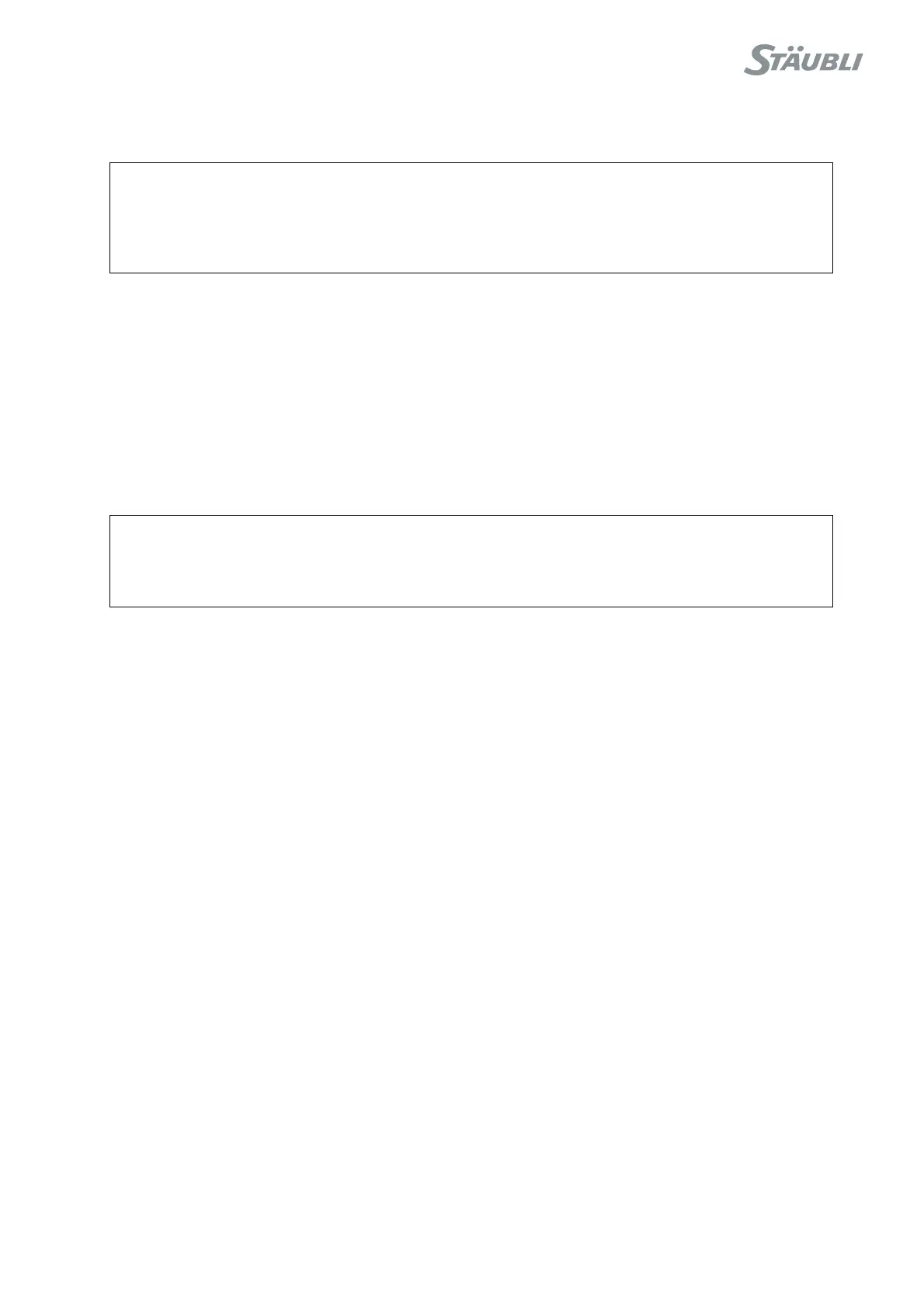CS8C © Stäubli 2009 – D28070504A
127 / 248
Chapter 6 - Operation
6.5. CALIBRATION, ADJUSTMENT, RECOVERY
6.5.1. DEFINITIONS
Stäubli arms are calibrated in the factory, to determine the specific 'zero' arm position with maximum precision.
Calibration quality is essential for arm accuracy, i.e. its ability to respect the required Cartesian positions.
If drive elements (motor, encoder) have been replaced, or in the event of mechanical slippage due to a shock, the
specific "zero" arm position can be displaced on one or more joints: it is then necessary to adjust the joints to
restore the arm's original precision.
If one or more axis have been displaced, there are simple procedures for resetting them, using pre-established
reference positions. If more than two joints have been displaced, or if no reference positions are available, it is not
possible to adjust the arm correctly and it is necessary to carry out a full readjustment procedure.
The arm position at any given moment is shown by:
• The position measured for each motor (encoder).
• The "zero" resetting offsets
These offsets are stored in the respective encoders of each motor. A backup is saved in the arm.cfx file of the
controller, a copy of which is supplied on the CdRom delivered with each arm.
During start-up, if a zero offset from a motor encoder is different from the one in the arm.cfx file (f.i. replacement
of the arm linked to the controller), it is necessary to determine which offset is correct. This is done in the recovery
operation.
The motor encoder also stores a phase offset for the encoder-motor combination. In the same way as for the zero
offsets, the motor phase offsets are saved in the arm.cfx file of the controller. During start-up, if a motor phase
offset on a motor encoder is different from the one in the arm.cfx file, it is necessary to state which offset is correct,
using the recovery operation.
6.5.2. RECOVERY PROCEDURE
The recovery application is accessed via the main menu on the MCP.
This is used to update arm or controller data if an inconsistency is detected between the data on a motor encoder
and the data in arm.cfx file of the controller.
The procedure consists of determining which set of data is correct, using a series of questions:
• If you have simply replaced the arm linked to the controller, the arm.cfx file of the controller corresponds to the
former arm. You can then use the recovery menu to update it.
CAUTION:
Each time an adjustment or recovery procedure is done, the calibration of the arm has to be
checked carefully to verify that the robot is able to move in its expected angular range and not
more then that range. This verification has to be done at slow speed.
CAUTION:
It is important to provide for an adjustment procedure in the cell and define the associated
reference positions beforehand.
